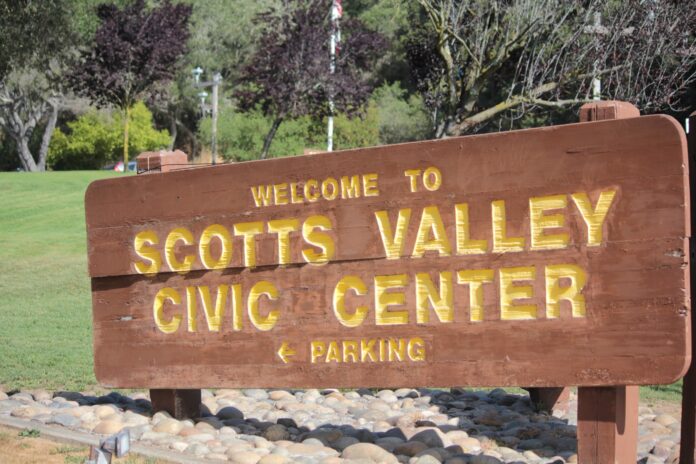The Scotts Valley City Council received a report last week on the progress of the new General Plan- a document determining the “blueprint” and “vision” of growth policies in the city for the next 20 years. The current General Plan, adopted in 1994, is 24-years-old, and by state standards is somewhat overdue for a complete overall.
For the last two years, city planning staff has been meeting regularly with the General Plan Advisory Committee (GPAC), a 12-member advisory council made up of city council members, local agency board members from the water district, school district and chamber of commerce, and four “public at large” citizen representatives.
Key concerns in public comments prior to the report on the new General Plan were currently proposed growth, including the Town Center project. Because the environmental review and final approval of the updated General Plan is not expected until late in 2019, concerns were expressed about the on-going Town Center project, and other project proposals. Planning Director Taylor Bateman explained that the planning guidelines governing the Town Center project is its own, separately approved Specific Plan, independent from the current, somewhat outdated General Plan.
Angela Franklin, a “public at large” representative on the GPAC, spoke on the need for council members to pay attention to social media about public criticism of the preliminary Town Center project plans, now available on the developer’s website, and to better understand “what people are afraid of, in terms of so much growth, so quickly, without looking at the big picture,” Franklin said.
The city has contracted with Kimley-Horn & Associates, a large planning and design engineering firm, to manage the technical data collection, actual drafting and editing of the new General Plan, as well as managing the public outreach and engagement process. This public outreach included the “Envision Scotts Valley Community Workshop” held last June in the Community center, in which more than 200 comments from public were recorded, and an online, 50 question survey that received more than 800 responses on the issues, goals and policies that residents believe should be included in the new, long-range General Plan.
Speaking as a member of the GPAC, Franklin said she hoped the developers of the Town Center project will read the responses to the survey, because it “flows over to what the community really wants Scotts Valley to be.” Councilmember Reed assured Franklin the Town Center developers have read the survey responses, and indicated that such community input would be very expensive for a developer to gather independently.
State law mandates the requirements of the General Plan, including seven “elements” or chapters that need to be coordinated, ranging from housing, economic development, open space, community services and facilities, and safety. These draft “elements” of the new General Plan have been reviewed and completed over the last two years and nine meetings of the GPAC, with “perhaps the most difficult elements to be completed in the next year,” according to Planning Director Bateman, which are land use and traffic.
In preparation for what is called the “Mobility” element, mandated to include planning for pedestrians and bicycles, Kimley-Horn conducted traffic counts at 27 intersections throughout Scotts Valley in October, aimed at providing a comprehensive baseline of existing traffic conditions, particularly at peak AM and PM intervals at key intersections. This traffic data will help define the traffic impacts of any changes in land use the new General Plan may recommend.
General Plans are considered the “constitution” or charter of local, long range planning policies, and, according to state law, the various elements must be internally consistent for orderly changes of land use and growth within a city. The General Plan gets implemented by the more fine grained and detailed zoning code, and often a change of zoning requires an amendment to the General Plan. Applications for project approvals routinely cite the General Plan policies a proposed project is consistent with, and need to explain or request amendments for any inconsistencies.
Outgoing councilmember Stephany Aguilar, after receiving sincere accolades for more than 20 years of service on the council earlier in the meeting, gave a stern warning about future council approvals of General Plan amendments after “so much work” goes into the updating process.
“What we have seen are developers who are more than willing to upend the General Plan to better accommodate their own pockets,” Aguilar said. Aguilar explained the city council has received requests for General Plan amendments four or five times a year over the last several years, and the General Plan can “lose continuity when we don’t follow it,” citing General Plan amendments requested for housing developments on golf courses or industrial sites.
According to the staff report to the city council, “Two elements remain to be drafted; namely Land Use and Mobility. These elements will be developed in tandem given the important relationship between the two. It is anticipated these two elements will be reviewed in draft form by the GPAC over a series of 4-5 meetings during the first half of 2019.”
Work products to date and more Information about the General Plan updating process are available at www.scottsvalleygeneralplan.com.












